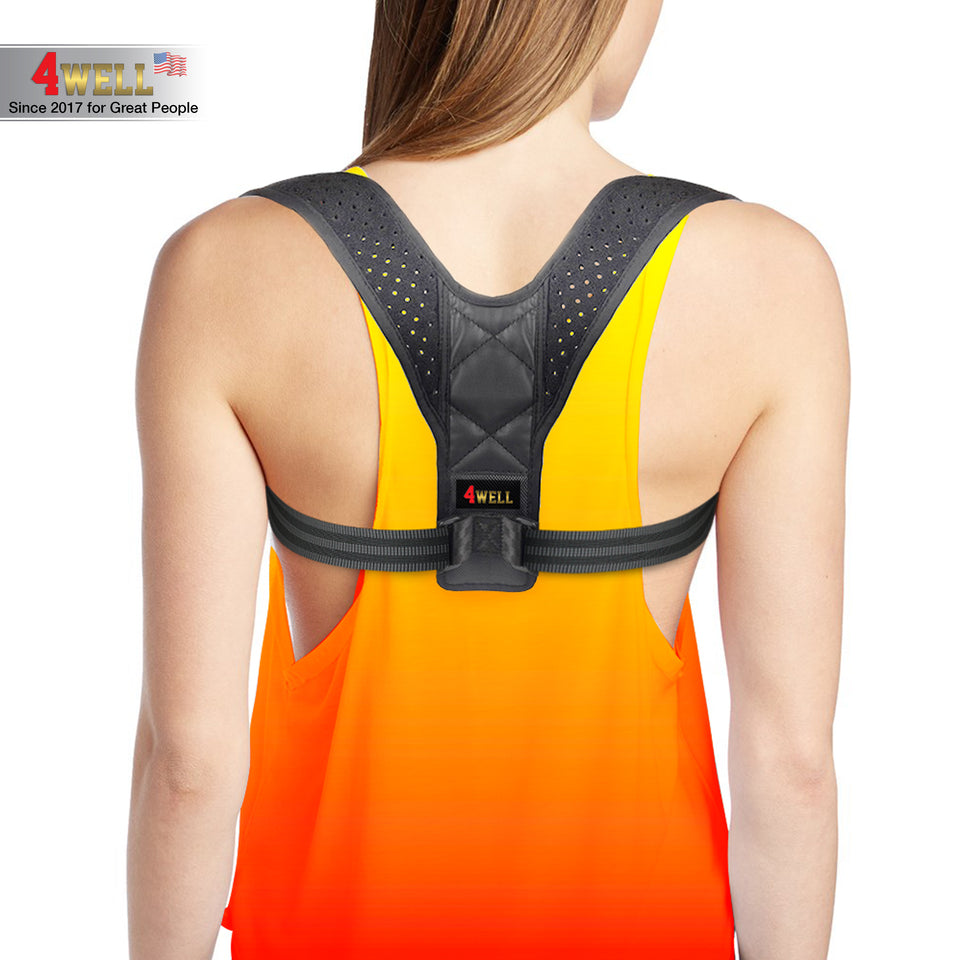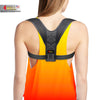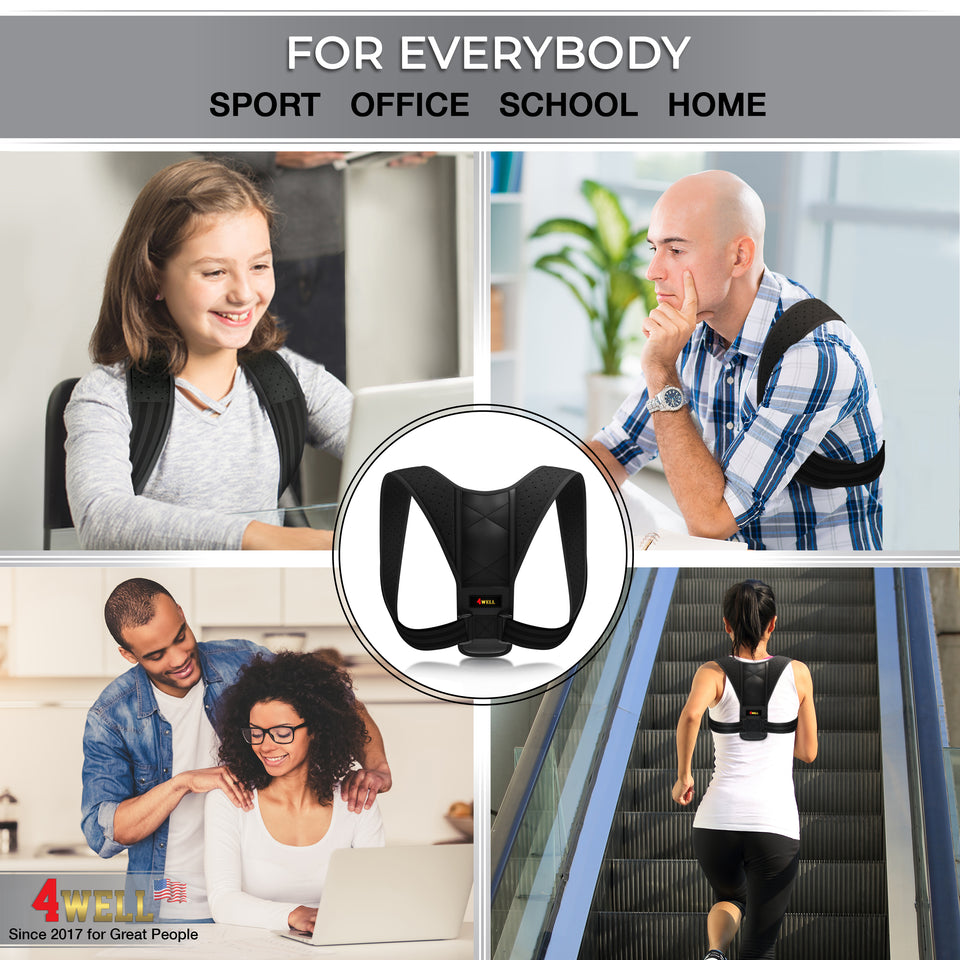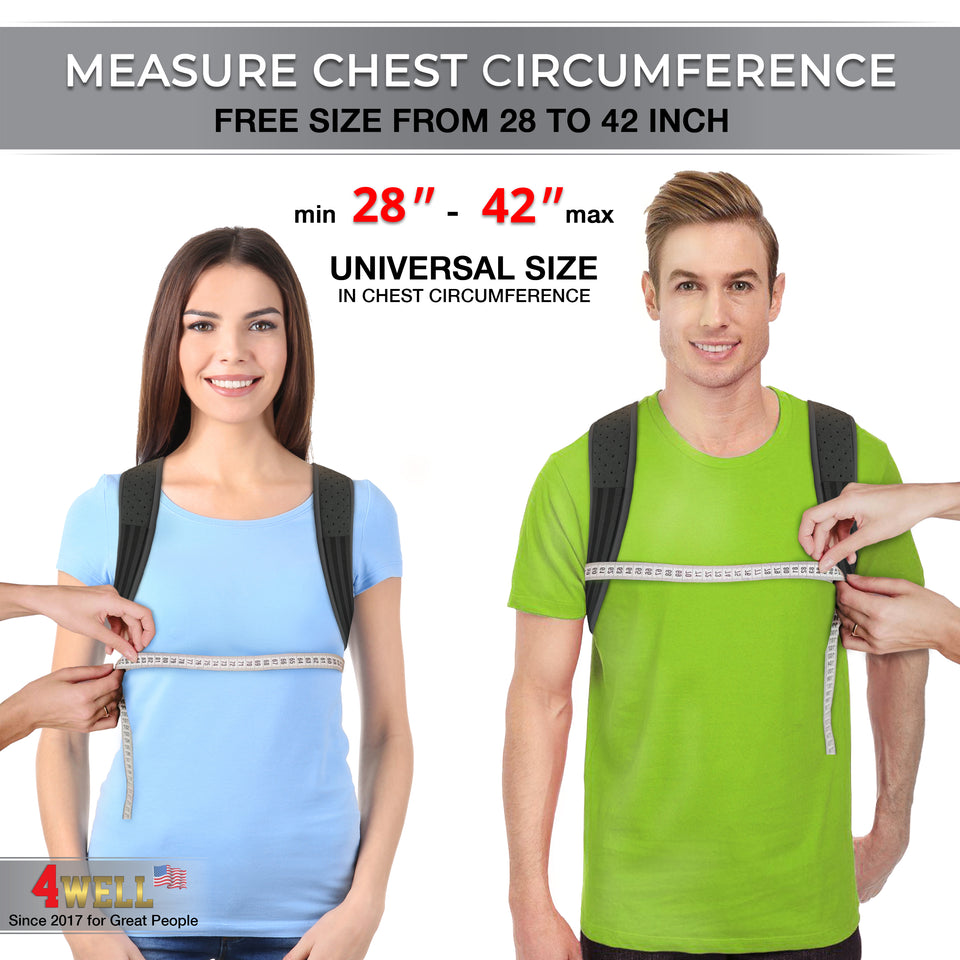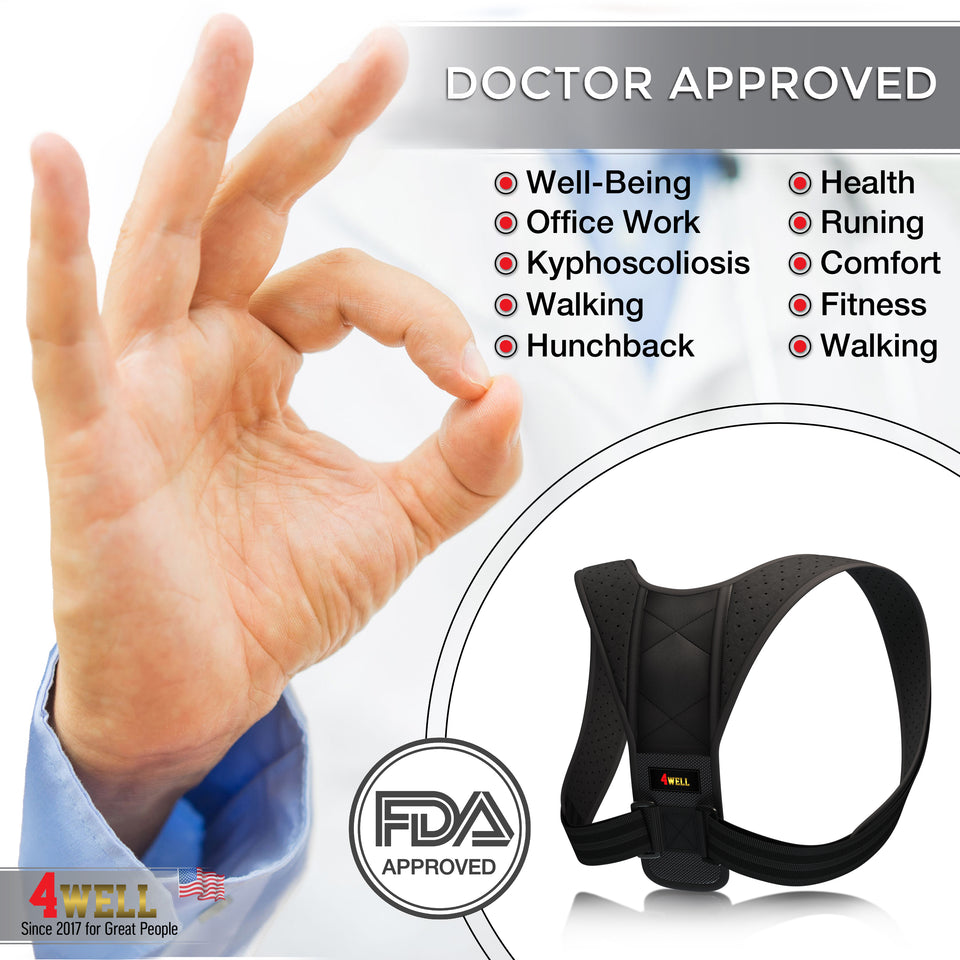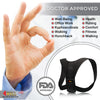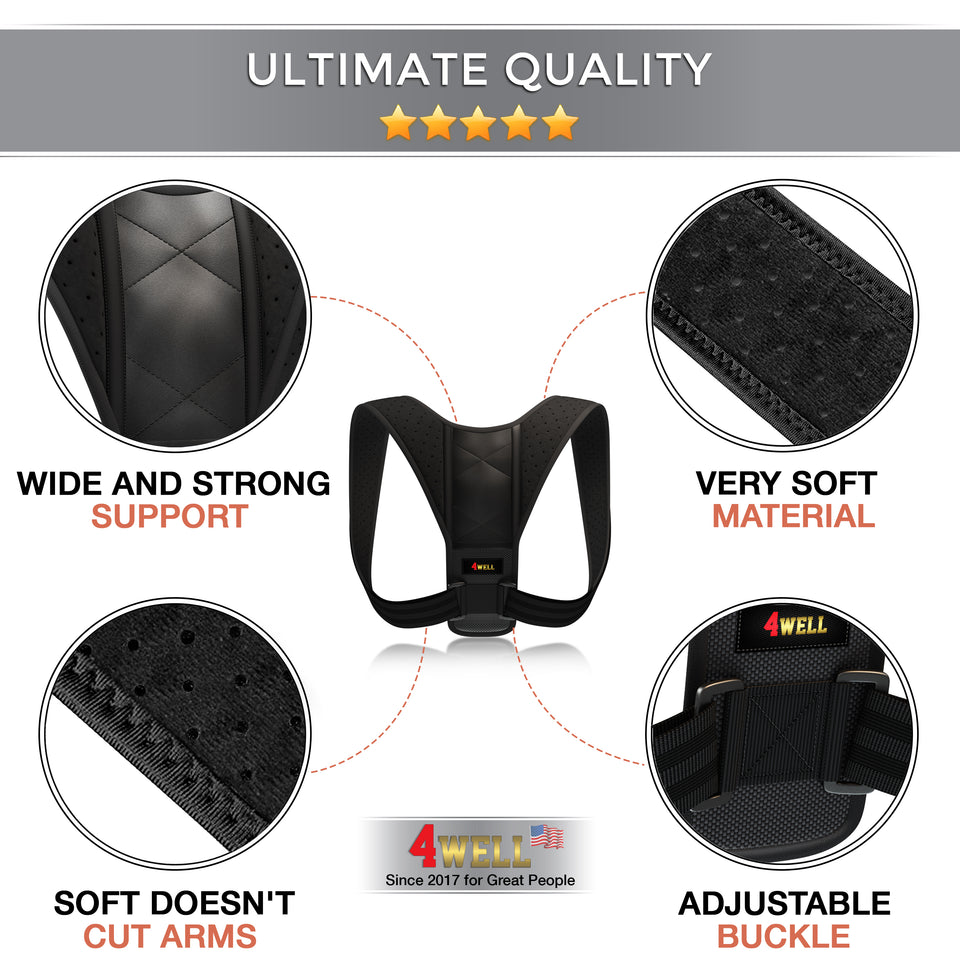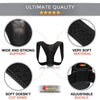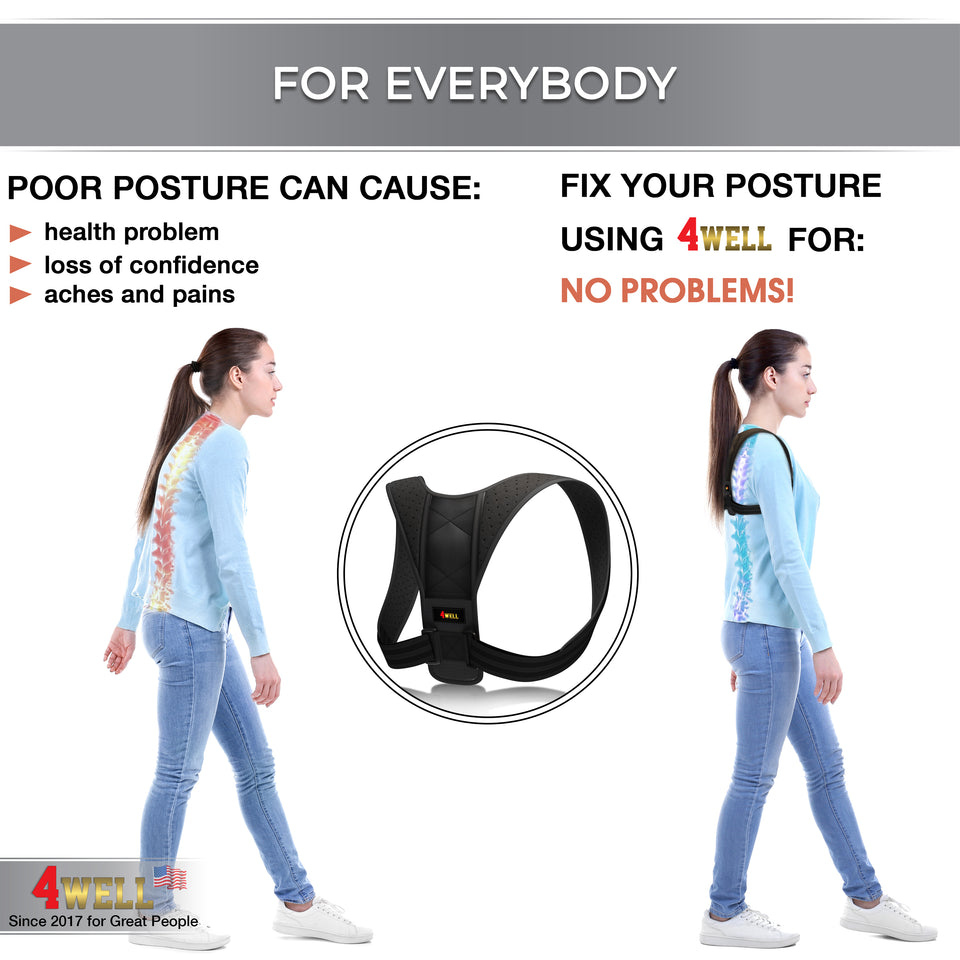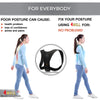Ultimate Comfort Posture Corrector
Regular price
$32.99
$26.48
20% OFF
You need this posture corrector support if you have
- Bad Posture
- Clavicle Fracture (Broken Collar Bone)
- Pain associated with Slouching
- Thoracic Kyphosis
- Lordosis
- Shoulder Instability
- Kyphoscoliosis
- Collarbone Pain
- Osteoporosis Pain
- Misaligned Spine
- Hunchback
- Sports Injuries
How to wear your corrector?
It’s recommended that you begin wearing your posture support over shorter periods of time, 30-40 minutes at first.
Beginning with shorter increments allows you to build up back strength over time. If you start wearing it for longer periods, it will not be comfortable and may dissuade you from further use.
How to continue to wear your corrector?
Once you are comfortable wearing the brace for 30-40 minutes at a time, begin to progressively extend the amount of time spent wearing it by 5-10 minutes.
Product Specification:
Material: soft and breathable neoprene
Chest Circumference: 28–42 inches OR 40–48 inches
Color: black
Weight: 0.22lb / 98g
Remember to take it off if it begins causing any muscle or back pain.
It’s not recommended that you wear the brace continuously, meaning that you should take it off for sleeping, exercise and during longer periods of time.
Don’t pull the straps too tight– it may worsen blood circulation. Wear the best posture corrector directly on body or cotton clothes.



When Might You Need a Posture Corrector?
A posture corrector can be a helpful tool in various situations where spinal alignment, muscle balance, or postural habits need support or retraining. Here are the most common cases where a posture corrector may be recommended:
-
Prolonged Sitting or Sedentary Lifestyle
If you spend hours sitting at a desk or working on a computer, it's easy to develop rounded shoulders or forward head posture. A posture corrector can serve as a gentle reminder to sit upright and maintain spinal alignment. -
Postural Kyphosis
Individuals, especially adolescents, with excessive curvature in the upper spine (rounded upper back) may benefit from a posture brace to prevent progression and support better alignment. -
Muscle Imbalance or Weakness
People with weakened upper back muscles or dominant chest muscles may experience poor posture. A corrector helps encourage proper positioning while the individual works on strengthening exercises. -
Recovery After Injury or Surgery
After back or shoulder injuries, a posture corrector may be used as part of the rehabilitation process to stabilize posture and prevent compensatory movements that could hinder healing. -
Neck and Back Pain Related to Poor Posture
Chronic neck, shoulder, or lower back pain due to bad posture can often improve with consistent postural support, helping relieve pressure on joints and muscles. -
Tech Neck Syndrome
With frequent use of smartphones and tablets, many people develop a forward head position. A posture corrector can help counteract this by gently guiding the head and shoulders back. -
Habitual Slouching
If poor posture has become a habit, a posture corrector acts as a physical cue to retrain the brain and body to adopt better posture unconsciously. -
Support for Elderly Individuals
Seniors may experience postural decline due to age-related muscle loss, spinal degeneration, or balance issues. A corrector can provide gentle support and promote better posture in daily life.
Estimated delivery time Free 7-20 days







